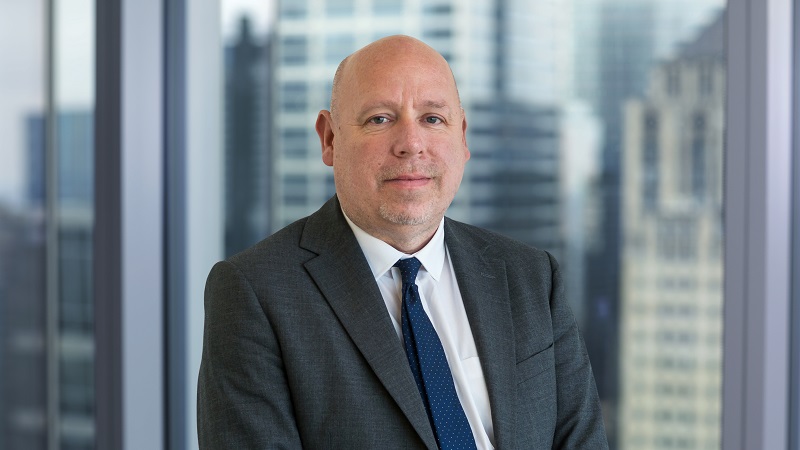In March 2022, the Fed hiked the federal funds rate for the first time since 2018, raising rates by 25bps. This was followed by a 50bp hike in May, another 75bps in June and 75bps in July. Together, the rate hikes drove the federal funds rate from 0.25% to 2.25%-2.50% range — the first time it has reached that level since 2020, writes William Blair Investment Management’s Daniel Wood.
The hikes have weighed on EM debt returns, which were already weak in 2021 and the first quarter of 2022, thanks to investor fears about the impact of the war in Ukraine and Chinese lockdowns.
The speed and extent of further monetary tightening is uncertain and, as a result, there are concerns about the impact of rate hikes on future fixed income returns. Should investors be concerned, or could this be a buying opportunity?
There are three main components of EM debt returns: the starting yield of the asset class; the change in EM debt spreads; and the sensitivity of yields to changes in US Treasury yields.
At present, there are a number of fears driving concerns about the future returns of EM sovereign debt:
- – The sensitivity of EM debt to rising interest rates could hurt performance
- – EM debt spreads could widen as interest rate hikes hurt global growth
- – Outflows could accelerate as fixed income and risk assets become less attractive
- – The US dollar could strengthen as interest rate differentials between EMs and developed markets narrow
- – Rate hikes could squeeze liquidity and accelerate EM debt restructurings
Heightened duration and sensitivity
The argument that rising interest rates—and rising Treasury yields—will hurt EM debt returns is particularly pertinent now, because the duration of EM hard currency debt has increased over the past 20 years as sovereign issuers have successfully extended the maturity of their USD issuance. In short, EM debt duration is longer now than it was in previous Fed tightening cycles.
So, in theory, EM debt’s sensitivity to rising Treasury yields is higher now than in past Fed tightening cycles, therefore we must ask if this should be a concern for investors—and the answer is that there is little historical evidence to suggest that Treasury yields will increase significantly once the Fed rate hiking cycle has begun.
Based on the three previous rate hiking cycles, we believe there is little evidence that the 10-year US Treasury bond yield will rise significantly in the year following the first Fed hike of the current cycle, taking us through to March 2023.
In each of the past rate hiking cycles high yield EM debt has outperformed investment grade EM debt in the 12 months following the first Fed rate hike. We expect the current tightening cycle to be no different. The high yield/investment grade spread differential is trading at historically wide levels.
We, thus, believe it could be compelling to overweight the high yield sector at the expense of investment grade bonds that offer less probability-weighted upside and seek to take advantage of valuations in distressed credits.
Unlike the three previous hiking cycles, we do acknowledge that inflation is much higher this time around but believe that it is largely driven by supply side disruptions rather than an overheating economy and strong domestic demand.
Therefore, we believe we may be close to peak inflation fear. A combination of both positive base effects and potential resolutions to supply side disruptions could alleviate some current fears about where inflation and the federal funds rate might be headed.
Bloom off the fixed income rose?
Another fear driving concerns about the future returns of EM sovereign debt is that outflows could accelerate as fixed income and risk assets become less attractive. The perception persists that as rates rise, fixed income investments—particularly those with longer durations— become less attractive. This, common wisdom holds, leads to a cycle of outflow and underperformance.
During the 2015-2018 rate hiking cycle, inflows were solid. Assets managed against the EM hard currency benchmarks actually grew by approximately 20% on strong inflows without any period of appreciable negative drawdown. Assets then grew again by another 10% in the year following the first rate hike (2016).
In recent years, flows into dedicated EM hard currency bond funds have been positive despite negative headwinds stemming from Covid-19. This year has been the exception, with net outflows of reasonable size as global liquity conditions have tightened.
Our expectation, however, is that as valuations continue to improve, flows will return to the asset class, which may act as a catalyst for higher prices.
We believe only a very bearish set of circumstances is likely to generate negative returns for EM investors over the next year. Our analysis suggests it would likely take a combination of the 10-year US Treasury yield rising and EM debt spreads widening substantially for the asset class to generate a negative return.
Thus, we now believe that EM debt may represent a buying opportunity for investors looking to take advantage of higher yields and improved valuations. Of course, in today’s environment, nothing is certain. We remain focused on navigating risks and changing market conditions to identify attractive investment opportunities.
This article was written for Portfolio Adviser by Daniel Wood, portfolio manager, emerging market debt, William Blair Investment Management






